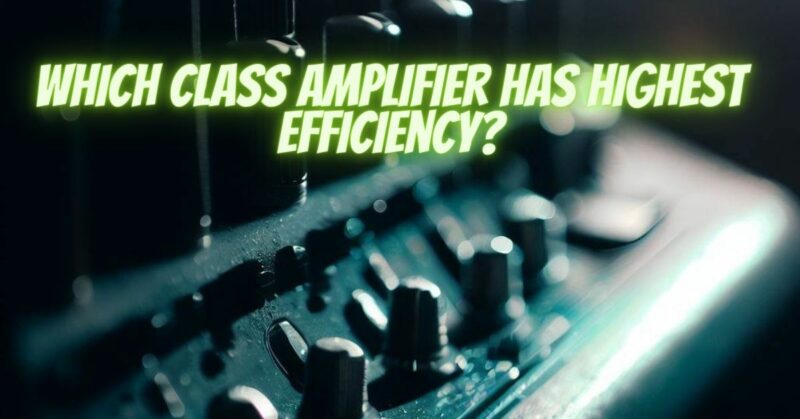Efficiency is a crucial factor in amplifier design, impacting energy consumption, heat generation, and overall performance. As the audio industry continues to evolve, different amplifier classes have emerged, each with varying efficiency levels. In this article, we’ll explore the amplifier classes and determine which one boasts the highest efficiency, shedding light on their characteristics and the factors that influence their energy efficiency.
Understanding Amplifier Classes and Efficiency
Class A Amplifiers: Class A amplifiers operate by keeping the active device conducting continuously, ensuring it remains “on” throughout the entire input waveform. While Class A amplifiers produce high-quality sound, their efficiency is relatively low due to continuous current draw, resulting in increased power consumption and heat generation.
Class B Amplifiers: Class B amplifiers use two active devices—one for the positive half of the input waveform and another for the negative half. This design improves efficiency compared to Class A amplifiers, but there’s a risk of crossover distortion due to the transition between active devices.
Class AB Amplifiers: Class AB amplifiers combine features of Class A and Class B designs, using two active devices like Class B but allowing each to conduct slightly beyond the zero-crossing point. This minimizes crossover distortion while maintaining reasonable efficiency.
Class D Amplifiers: Class D amplifiers are known for their exceptional efficiency, often exceeding 90%. They use pulse-width modulation (PWM) to switch the active devices on and off rapidly, minimizing power loss and heat generation. Class D amplifiers are commonly used in portable devices, subwoofers, and audio systems.
Comparing Efficiency Levels
Among these classes, Class D amplifiers tend to exhibit the highest efficiency. This is due to their switching nature, which significantly reduces power dissipation and energy loss. Class D amplifiers are especially efficient at low to medium power levels, making them ideal for applications where energy conservation is crucial.
While Class AB amplifiers offer a good balance between sound quality and efficiency, their efficiency levels generally fall between those of Class D and traditional linear amplifier classes like Class A and Class B.
Factors Affecting Efficiency
Several factors influence an amplifier’s efficiency:
- Operating Conditions: Amplifiers are most efficient when operated near their optimal power range. Operating amplifiers at extremely low or high power levels can reduce efficiency.
- Load Impedance: Different load impedances can impact an amplifier’s efficiency. Some amplifiers perform more efficiently with specific load values.
- Circuit Design: Efficient circuit designs, advanced switching technology, and well-engineered power supply units contribute to higher efficiency levels.
- Cooling Systems: Effective cooling mechanisms, such as heatsinks and fans, can help dissipate heat generated during operation, ensuring the amplifier maintains its efficiency.
When evaluating amplifier efficiency, it’s important to consider the specific context and application. While Class D amplifiers generally exhibit the highest efficiency, each amplifier class has its unique set of advantages and disadvantages. Your choice should consider your desired sound quality, power requirements, thermal considerations, and the application’s energy efficiency goals. Selecting the right amplifier class involves finding a balance between energy efficiency, sound quality, and suitability for your intended use.


